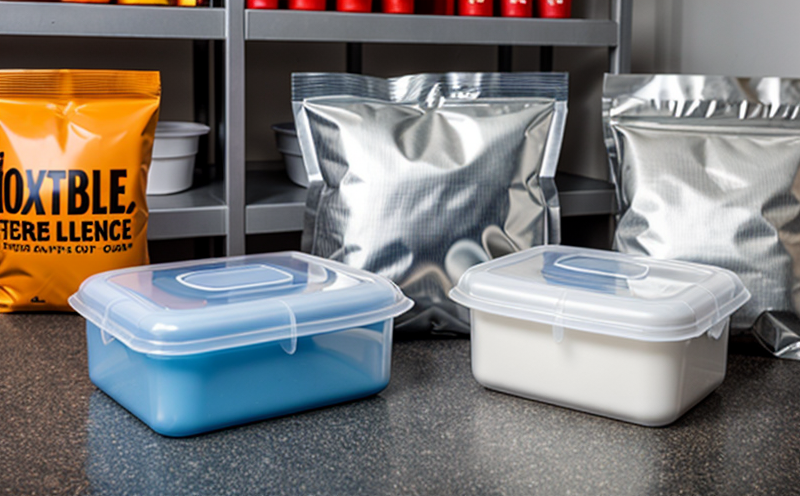ASTM D3985-05 Oxygen Permeation Test
The ASTM D3985-05 test method is a critical tool for evaluating the oxygen permeability of flexible packaging materials, ensuring that products remain protected from oxidative degradation during storage and shelf life. This test measures how much oxygen can pass through a given thickness of material under specific conditions. The primary focus is on understanding the performance of barrier properties which are essential in maintaining product freshness.
The ASTM D3985-05 standard specifies clear procedures for testing, including specimen preparation and conditioning, as well as the use of controlled atmospheres to simulate real-world storage conditions. It’s important that samples are conditioned under specified temperature and humidity levels before testing to ensure accurate results reflecting actual performance over time.
The test apparatus typically consists of a permeation cell with two chambers separated by a sample disc cut from the packaging material being tested. One chamber is filled with air while the other contains nitrogen gas (or another inert gas), creating a concentration gradient across which oxygen diffusion occurs. By measuring changes in oxygen pressure on both sides over time, one can calculate the permeability value.
Accurate measurement of this property helps ensure proper design and selection of flexible packaging materials that meet specific performance requirements such as shelf life extension or protection against spoilage due to oxidation reactions. Compliance with standards like ASTM D3985 is often required when dealing with food products, pharmaceuticals, cosmetics, electronics, among others.
Real-world applications involve determining whether a particular packaging solution will provide sufficient barrier performance for the intended product and storage conditions. For instance, if you're developing a new type of snack bag that needs to maintain freshness over several months in ambient temperature environments, knowing its oxygen permeability is crucial.
Benefits
- Evaluation of the integrity and effectiveness of flexible packaging materials.
- Ensures compliance with international standards and regulatory requirements.
- Promotes延长输出





